Two decades ago, this magazine squinted into the hazy horizon and coughed up a slew of wild predictions about the future of drinking.
So, how’d we do? Not great. But before we tally up the scorecard, let’s establish what’s a hit or a miss. For a hit, the predicted invention need not just exist (most of them do in one form or another), it must have gotten real traction with drinkers. Furthermore, we’re throwing out all the unserious let’s-have-a-larf predictions because no one expected those to come true.
Let’s dive in.
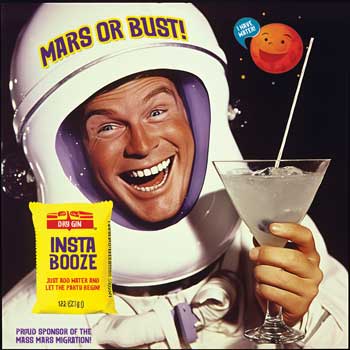 Instant Alcohol MISS
Instant Alcohol MISS
For a brief shining moment, it seemed powdered alcohol had arrived. Remember Palcohol? Remember when every nanny-state politician in the U.S. shrieked in chorus when they discovered the Alcohol and Tobacco Tax and Trade Bureau (TTB) had approved it for sale? The cowardly TTB rescinded its approval in 2015, but not before 31 hysterical states had preemptively banned it from the shelves. (It should be noted that Cenk Uygur of The Young Turks Show and other commentators claimed Big Alcohol, eager to quash a potential rival, was behind all the hubbub.)
Almost every breathless argument made against Palcohol was specious and based entirely on conjecture and fantasy. And here’s what’s ironic: those nannies were attacking an illusion. They thought Palcohol was what I’d predicted and hoped for—a chemical reaction between water and an active chemical powder that resulted in high-proof alcohol. Instead, it was simply grain alcohol poured into a carrier powder (probably tapioca maltodextrin). That was it. When you added water the powder dissolved, leaving you with a low-proof mixture of starch, water and whatever flavor they added to hide the awful, goopy taste. It was one of those instances when a scam was shut down not because of what it really was, but what it pretended to be. Imagine if back in the 1960s the government swooped in and banned those novelty X-ray glasses sold in comic books, not because they were an obvious sham but because they were terrified children would get brain cancer from all those unregulated $1 X-ray machines they were strapping to their faces.
Will the day come when real powdered alcohol arrives? Probably, but not in the immediate future. Barring some radical breakthrough, molecular chemists estimate we’ll have to wait at least 10 to 15 years.
The Cocktail Hat MISS
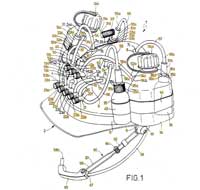 Though the patent for this innovation was filed in 1987, the Cocktail Hat never entered production. Why? The same reason you rarely glimpse the forerunning Beer Hat—who wants ten pounds of obtrusive weight strapped to their heads? It’s uncomfortable, not to mention peacocky. When you see someone wearing a Beer Hat, you don’t immediately think, “This gent resides in the future!” Instead, you see an extrovert groveling for attention. And don’t we already have a surplus of those types on social media?
Though the patent for this innovation was filed in 1987, the Cocktail Hat never entered production. Why? The same reason you rarely glimpse the forerunning Beer Hat—who wants ten pounds of obtrusive weight strapped to their heads? It’s uncomfortable, not to mention peacocky. When you see someone wearing a Beer Hat, you don’t immediately think, “This gent resides in the future!” Instead, you see an extrovert groveling for attention. And don’t we already have a surplus of those types on social media?
Interactive Alcohol MISS
The whole idea of your booze interacting with you (beyond the usual way) has yet to catch on with Big Alcohol, and isn’t that strange? Maybe they conducted market studies and found drinkers didn’t want their bottle of bourbon singing hillbilly jingles or their beer cans telling them jokes. After the initial novelty, I can imagine a mouthy bottle getting old real fast. And it would be only a matter of time before those interactions devolved into an infuriating loop of annoying ads and government warnings about drinking. So let us count our blessings.
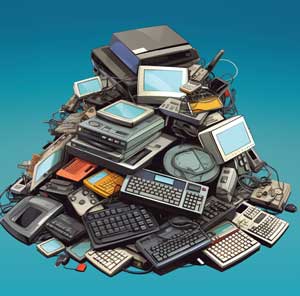 Blackout Recorder
Blackout Recorder
Drunkard Retrieval Service
The Translurlator
The Booze Buddy MISSES
These all exist, in one form or another, in app stores. In the same way those early word-processing machines were made redundant and ridiculous by laptop computers, these single-purpose niche predictions were swallowed up by the whale of smartphones. What’s the point of carrying around a half-dozen gadgets when all their duties can be performed by a single device (whether a phone, wristwatch or glasses) with apps?
Spinning Bed Negation Device MISS
I had a chance to experiment with this concept during a 3am visit to a park’s merry-go-round, and you know what? It doesn’t work. If anything, the counter-spinning effect made me feel worse.
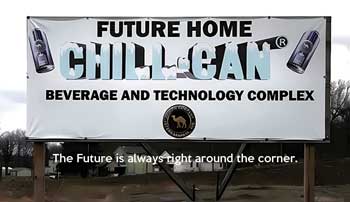 The Self-Chilling Can MISS
The Self-Chilling Can MISS
In an alternate universe, self-chilling beers and cocktails are cheap, commonplace, and have been around since the turn of the century. Lugging around a cooler full of ice to keep your drinks cold is as old-fashioned as sourcing your music from a stack of CDs.
But not in the crappy universe we’re stuck in. The technology is on hand and has been for nearly two decades. It works. You just twist the bottom of a can, a CO2-powered heat-exchange unit activates, and less than a minute later your beer is 30 degrees colder. How could this not catch on?
There are a couple of reasons. First, investors view the entire can-chilling field as shady. The first shadow was cast in the 1980s when a can-cooling start-up called Laser Arms sold millions in stock only to be unveiled later as a front for a gang of con men.
Nevertheless, a big breakout moment seemed on hand in 2016 when The Joseph Company International (JCI) partnered with the rust-belt city of Youngstown, OH to build a massive Chill-Can factory that would revive the town’s fortunes and flood the nation with affordable self-chilling beverages.
After demolishing a neighborhood for the factory and shoveling financial incentives at JCI, Youngstown held its breath and waited for the jobs to start rolling in. Seven years later, after loads of acrimony, accusations, suits, and counter-suits, the factory has yet to be built.
 In 2018, JCI partnered with 7-Eleven and test-marketed Chill-Can versions of the store’s Fizzics Sparkling Cold Brew Coffee in 15 L.A. locations. You could get one for a mere $2.99. So how’d it go over? We may never know because 7-Eleven won’t say.
In 2018, JCI partnered with 7-Eleven and test-marketed Chill-Can versions of the store’s Fizzics Sparkling Cold Brew Coffee in 15 L.A. locations. You could get one for a mere $2.99. So how’d it go over? We may never know because 7-Eleven won’t say.
And there we are. The tech is here, but beverage companies don’t seem eager to jump in. That, of course, might change in an instant. I fully expect a bold canned cocktail or beer company (perhaps one recently crippled by bad PR moves) to roll out self-chilling cans and take the drinking world by storm.
Any day now.
The Robartender MISS
I felt sure about this one. Way back in 2002, I sensed we were teetering on the brink of a Barbot Revolution. A handful of hard-working prototypes were already in place. There was Miami’s Cecilia, who sloooowly trundled out cocktails while cracking wise from her digital screen, and who can forget Cynthia and Rastas working the rails and causing a sensation at Cynthia’s Cyberbar in London?
So what happened? After some initial looky-loo traffic, drinkers lost interest. Cynthia’s Cyberbar went belly up after the robots broke, and no one wanted to fix them. Cecilia is probably working long shifts at a call center in Jacksonville.
The revolution reignited in 2014 when the Royal Caribbean Cruise Line installed the first of its “bionic bars” aboard the good ship Quantum of the Seas. These bars are “manned” by a pair of Makr Shakr robots, which have the appearance and personality of those monstrosities you see working automotive assembly lines. Without any attempt at conversation (you order using your phone or a tabletop touchscreen), they crank out weak drinks in plastic cups at a speed and dexterity matched only by a lackadaisical Chili’s bartender trying to get fired. There is, however, one aspect of their automation that works perfectly—tipping. A gratuity is added to your tab whether you think the machines deserve it or not.
Regardless, bionic bars have been added to five more RCCL ships, and there are also a pair of Makr Shakrs working the Tipsy Robot kiosk in Vegas.
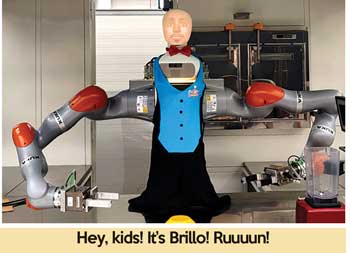 And then there’s Brillo. Or “Bartending Robot for Interactive Long-Lasting Operations” if you’re nasty. Though still in development, Brillo is capable of remembering your face (and thus your drink preferences) and carrying on complex conversations about anything at all. It’s much slower than an average bartender but will be able to tell you the GNP of Ecuador with 90% confidence. Personal conversations appear to be stiff, bland and extremely politically correct. Also, there are concerns about who gets access to the personal information you might lay on Brillo. If social media has taught us anything, it will be “shared” with whoever is willing to pay for it.
And then there’s Brillo. Or “Bartending Robot for Interactive Long-Lasting Operations” if you’re nasty. Though still in development, Brillo is capable of remembering your face (and thus your drink preferences) and carrying on complex conversations about anything at all. It’s much slower than an average bartender but will be able to tell you the GNP of Ecuador with 90% confidence. Personal conversations appear to be stiff, bland and extremely politically correct. Also, there are concerns about who gets access to the personal information you might lay on Brillo. If social media has taught us anything, it will be “shared” with whoever is willing to pay for it.
As it stands, it will require significant leaps in robotics and AI to move barbots from a novelty to an actual threat to the livelihoods of flesh-and-blood bartenders. It turns out that drinkers want much more than the ability to assemble drinks from their bartenders. Barbots won’t make serious headway until they can overcome what we’ll call the Jeeves Iceberg Factor, that vast amount of humanity and charm that lies beneath the tip of simply mixing and handing over drinks.
When and if barbots finally do make the leap, I have a strong feeling that the breakthrough version will be a general utility robot capable of many tasks, including mixing and pouring drinks. After finishing its shift, it’ll be restocking shelves and mopping floors just like human bartenders.
Are you starting to sense a theme here? The future has arrived and no one is meeting it at the gate. It’s as if all the wonderful gadgets we thought would make the future shiny and thrilling were just a bunch of geegaws of passing interest. That we’d rather suffer minor inconvenience than radical change. If we want cold beer, we’ll buy it cold or put it in a fridge. Robots aren’t good bartenders because mixing and serving drinks is only about a third of a bartender’s job. What makes barbots attractive to bar owners is what makes them repulsive to customers: they’re coldly efficient and thus will never overpour a drink. Overtipping and being nice will not help you one hair because free will and benign influence are completely removed from the equation.
Do you think anyone who got a plastic-cup cocktail from the Makr Shakr robots said, “Wow, these machines make them strong!” Everyone gets the same weak drink, and you may think that’s democracy, but it’s not.
It’s straight-up robot communism.
 Vita-Booze HIT
Vita-Booze HIT
Instead of crashing onto stage with much fanfare, as predicted, vitamin-infused alcohol drinks are ever-so-slowly seeping into the drinking world.
There was one attempt at fanfare. In 2005, a Dallas-based brewery unleashed a vita-beer called Stampede Light Plus. The German-style light lager was infused with B vitamins, folic acid and folate, using a method developed by the late Joseph Owades, the biochemist who came up with light beer in 1967. Jessica Simpson came on board as a spokesperson in 2008 and was featured in a series of ads using the “Be Smart, Drink Smart” tagline.
This prompted a 2009 Newsweek article to ask: “Are Vitamin-Enhanced Alcohols a Healthier Choice?” They tapped Dr. R. Curtis Ellison, a professor of medicine at Boston University, to answer that question. “People should not drink wine or alcohol for their health,” he snarled. “It’s like putting vitamins in cigarettes. That’s stupid.” Stampede Light ceased production a year later.
The churlish Dr. Ellison was channeling the same crass argument repeated since studies in the 1950s revealed the many health benefits of moderate drinking. Those studies were ruthlessly suppressed by the government and the medical establishment for decades because there was this idea that if the public found out drinking was in any way beneficial, they’d lose their minds and drink themselves into oblivion.
Which, of course, never happened. Yet, to this day, that dialectic “We must hide health information from the public to protect their health” fallacy persists. The TTB refuses to allow alcoholic beverages to state any health claims whatsoever on their labels or in their advertising. It doesn’t matter what vitamins or nutrients (infused or naturally occurring) are in the beer, wine, or liquor; they cannot be listed. Diabetes-inducing breakfast cereals can splash out that data in garish prose but not alcohol. They don’t want people drinking beer and thinking, “I’m just taking my daily vitamins, and boy do I need a lot of vitamins.” The nanny state doesn’t want you to feel anything but shame when you drink.
In 2019, Dr. Jacob Appel, the Director of Ethics Education in Psychiatry at the Icahn School of Medicine, pointed out that “Alcohol is one of the few foods and beverages that aren’t fortified.” Which he thought odd because adding B-1 to alcohol would go a long way toward preventing thiamine deficiency, a significant problem with heavy drinkers. Incredibly, Dr. Appel received pushback from the medical community for espousing this idea because, you know, fuck those drunks.
There seems to be a psychic firewall between alcohol and the medical establishment. And, to be perfectly frank, I’ve noticed some drinkers like it that way. Some prefer to view drinking as unadulterated sin, a dangerous sport whose purity would be ruined by helmets or kneepads. Adding vitamins, they feel, is like inviting your future mother-in-law to your bachelor party. Totally ruins the vibe.
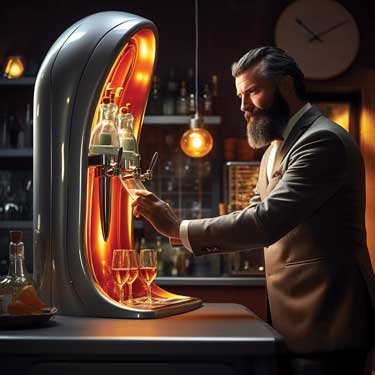 Cable Cocktails MISS
Cable Cocktails MISS
Aside from some raucous dudes on YouTube who pranked a friend by hooking up a beer keg to his home’s plumbing, this hasn’t happened. People still prefer to inefficiently buy their booze in containers and transport it via vehicle to their homes. I mean, why cable electricity and pipe water into your home when you can just drive on down to the store and buy crates of batteries and barrels of water, am I right?
I can think of only one downside to this brilliant idea. The piped-in booze would naturally evolve into a form of utility and, like all utilities, would be regulated by the government. And you know how they are. Get a public intoxication ding on your social credit account and suddenly your whiskey faucet stops working. During periods of unrest, the whole network would shut down. It’s the kind of power we definitely don’t want in the state’s hands.
The U-Pourium HIT
Finally, a home run. The first self-serve bar opened in Chicago in 2014. Called Tapster, it still does a booming business long after the initial novelty wore off. It’s the same idea behind the ever-expanding self-checkouts you see in grocery stores. By investing in a a bit of trust, the bar slashes its labor costs, and the customer gets his hands on the wheel. (And perhaps more importantly, doesn’t have to talk to any humans, am I right, introverts?)
 A few major players, namely PourMyBeer, iPourIt, and BeerWall, dominate the self-serve bar market. These companies provide the tech and gear necessary to set up self-serve beer walls and tables, and by all reports they’re staying busy. There are presently over 5,000 bars in the US with a self-serve component, and that’s expected to double by 2026. Who needs barbots pouring booze when the customer is willing to do it themselves? They want to do it. I’ve tried it. It’s empowering. It gives you a sense of control. Most only serve beer now, but that’s likely to change over time.
A few major players, namely PourMyBeer, iPourIt, and BeerWall, dominate the self-serve bar market. These companies provide the tech and gear necessary to set up self-serve beer walls and tables, and by all reports they’re staying busy. There are presently over 5,000 bars in the US with a self-serve component, and that’s expected to double by 2026. Who needs barbots pouring booze when the customer is willing to do it themselves? They want to do it. I’ve tried it. It’s empowering. It gives you a sense of control. Most only serve beer now, but that’s likely to change over time.
At first glance, the U-Porium faces the same hurdles as the barbot but with one major difference: You’re not dealing with a mechanical middleman. A machine isn’t the bartender—you are. And so long as you like and trust yourself, you should be comfortable with that.
So, will they continue to multiply or fade away like the automats of yesteryear? Considering the way labor costs are skyrocketing, I’d say they’ve nowhere to go but up.
 Virtual Drinking Buddies PENDING
Virtual Drinking Buddies PENDING
This is so close. Don’t believe me? Check out Ghost in the Machine. With just a phone and a free app, you can drink with any number of celebrity drunkards, living or dead. That’s already impressive, but that’s just the first stage. Once deepfake video and voice are fully integrated—and this is already happening—it will be hailed as the greatest cultural advancement since Happy Hour was invented. Or at least speed dating.
Mark my words: within a decade, Drink with Your Heroes machines will be as commonplace in bars as digital jukeboxes. And they’ll most likely be free to use. Oh, Bogart might casually mention a new brand of gin or Hunter S. Thompson might start shouting about his favorite hamburger restaurant, but hey—we’re already accustomed to that sort of slippery marketing, right?
Now, you might argue that this innovation further erodes human interconnectivity and all that, but let’s face it: that boat has already left the dock. It’s halfway across the ocean. And to be honest, I’d rather have a booze-up with Bukowski than watch some smug idiot on TikTok rhapsodize about a new type of body scrub. Or, you know, talk to some human. At least with Buk I know what I’m getting.
The Recarbonator Wand MISS
Since compact carbonators like the SodaStream are ubiquitous now, why isn’t there a pocket version you can produce with a flourish to revitalize flagging beers and cocktails and perhaps even jazz-up boozes common sense and decency say you should not?
Sadly, the Recarbonator Wand is an example of The Flying Car Quandary: a seemingly simple idea that is fraught with all sorts of unrealized hazards.
While there are wands that shoot CO2 bubbles into your drinks, that doesn’t actually carbonate them. True carbonation requires placing the target liquid under pressure, and doing that with an injector requires a sudden and massive explosion of force. So, essentially, you would be carrying a small bomb in your pocket. Right next to your genitals.
The Sober-Up Pill MISS
Scientists have been mightily groping at this, but so far haven’t come up with something they want to give to human subjects.
First, they tried enzymes that mimic the body’s alcohol-processing activities. So far the results are so-so.
More recently they declared that hormone therapy was the answer: Hormone FGF21, which your liver naturally produces, “mediates its anti-intoxicant effects by directly activating noradrenergic neurons in the locus coeruleus region, which regulates arousal and alertness.” Yeah. It does that. Anyway, they’ve injected the hormone into drunk mice, and it seems to sober them right up. Human trials are on the horizon, but there doesn’t seem to be much of a hurry.
Innovations and Trends We Missed, and What’s Coming
While booze delivery has been around for ages, booze delivery apps like Drizly, Saucey, Minibar, and the rest has made it ridiculously easy.
Though not directly related to drinking, we can all agree that ride-sharing services like Uber and Lyft have made boozing about town miles better.
Canned cocktails have been around since the 1960s, but the current explosion certainly caught us off guard. Their popularity is reportedly the spawn of the COVID lockdowns and Millennials and Gen Z graduating up from canned alcoholic seltzers.
Home cocktail machines made the scene and are hanging around (even Black & Decker makes one), but I don’t see them winning a lot of counter-space wars. Drinkworks, a much-hyped pod-machine collaboration between Keurig and AB-InBev, just threw in the towel because the market looks meh at best.
The problem with these appliances is their narrow scope. Depending on what four or six bottles you load into them, they can only make a handful of different cocktails. To make a decent range of drinks, the machines would have to be the size of a refrigerator and cost one to three grand to properly stock.
Unless, of course, it was stocked with just one neutral base spirit and, through high-tech alchemy, could “print” any cocktail you could imagine.
 Cana One was supposed to be that drink-printing machine. According to its initial marketing, the sleek coffee-maker-sized machine, loaded with chemical pods and fluids, could make any drink you wanted, alcoholic or not, using cutting-edge molecular wizardry.
Cana One was supposed to be that drink-printing machine. According to its initial marketing, the sleek coffee-maker-sized machine, loaded with chemical pods and fluids, could make any drink you wanted, alcoholic or not, using cutting-edge molecular wizardry.
Unfortunately, and despite $30 million in startup cash and Sir Patrick Stewart on board as brand ambassador, Cana shut down in May of this year. They claimed they couldn’t get their production and manufacturing budget together, but I have a feeling the molecular beverage printing tech isn’t there yet, and the drinks tasted funny.
Once a company does pull this together, however, the true kitchen cocktail machine will arrive and I will happily buy one. So long as the rum and colas don’t taste like anything other than rum and cola.
We failed to forecast the countertop beer machines that are starting to invade kitchens. Though they sadly have as much in common with pod coffee makers as bread machines, it’s only a matter of time before an all-devouring Universal Fermenter comes along and does away with all those green compost bins cluttering the roadways. Why turn your waste organics into something that might make your petunias grow a little better when you could turn it into something that will definitely make you grow a lot happier? Like beer and wine?
And how far behind that will be the Universal Distiller, which will turn that low-proof waste that some call beer and wine into something truly fun.
This would naturally invite into the kitchen the Universal Infuser, which would use flavor agents and enzymes to turn that raw white spirit into bourbon, gin, rum or whatever strikes your fancy.
At some point, of course, this magnificent trio will be combined into the fantastic Universal Boozifier, which would take rotten fruit and vegetables all the way to a delightful rye whiskey.
And if you thought Big Alcohol and the nannies got overly excited about a sham instant alcohol, wait until you hear the hue-and-cry raised against “The Countertop Child-Poisoner That Is Also a Ticking Time-Bomb Waiting to Blow Your Family to Bits!”—Frank Kelly Rich

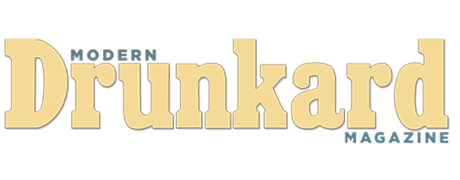

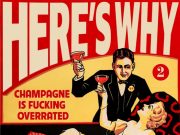








the universal distiller, after mr. coffee et al, should be the mr. booze.